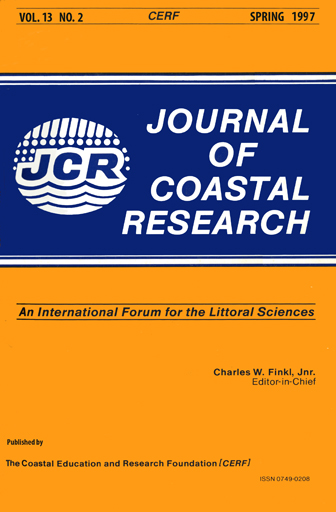The Wave Climate of the Pacific Northwest (Oregon and Washington): A Comparison of Data Sources
Keywords:
microseisms, ocean waves, wave measurements, Oregon, WashingtonAbstract
Wave data for the Pacific Northwest of the United States have been derived from four measurement systems and from wave-hindcast techniques. Direct measurements have come from deep-water buoys of the National Data Buoy Center (NDBC) of NOAA and from shallow-water directional arrays and deep-water buoys installed by the Coastal Data Information Program (CDIP) of the Scripps Institution of Oceanography. The longest series of wave measurements for the Northwest coast has been obtained with a microseismometer system, a technique based on the measurement of microseisms produced by ocean waves. According to theoretical analyses, the microseisms are generated by the pressure field associated with standing waves produced by wave reflection from the coastline. This theory is substantiated by the data collected on the Oregon coast in confirming the expected correlations between the amplitudes and periods of the microseisms and the corresponding ocean-wave parameters. In addition to these direct measurements, wave data also are available from the Wave Information Study (WIS) of the U.S. Army Corps of Engineers, derived from hindcasts based on daily weather charts spanning the years 1956 to 1975. There are some systematic differences between the data sets. The deep-water NOBC buoy tends to yield higher significant wave heights than do the two CDIP buoys; a statistical regression of daily measurements indicates that heights reported by the NOBC buoy are 8% higher. The microseismometer system yields significant wave heights that are in good agreement with the buoy data, but measurements of wave periods are poor. The WIS hindcast data systematically overestimate wave heights, being some 30 to 60 percent larger than measured by the microseismometer and deep-water buoys. The wave data for the Northwest coast establish that during summer months, deep-water significant wave heights range 1.25 to 1.75 meters, increasing on average to 2.0 to 3.0 meters during the winter. Wave periods are on the order of 5 to 10 seconds in the summer when generation is more local, increasing to 10 to 20 seconds during the winter when storm systems are further from the coast and are larger. Major winter storms typically generate waves with deep-water significant heights from 6 to greater than 7 meters, with the calculated equivalent wave-breaker conditions on Northwest beaches reaching heights of 9 to 10 meters. The series of data sets account for the wave conditions on the Northwest coast, data which can be used to establish the extreme-wave parameters. Due to the systematic differences between the directly measured waves and hindcasts by WIS, these data sets had to be analyzed separately. Combining the CDIP deep-water buoy measurements and the microseismometer data, 24 storms with deep-water wave heights in excess of 6 meters were identified within the 23-year total record, with the largest recorded significant wave height having been 7.3 meters. Based on those storm-wave occurrences, extreme-wave analyses yielded a significant wave height of 7.8 meters for the 50-year storm, a statistically reliable estimate, and a less reliable value of 8.2 meters for the 100-year storm.


